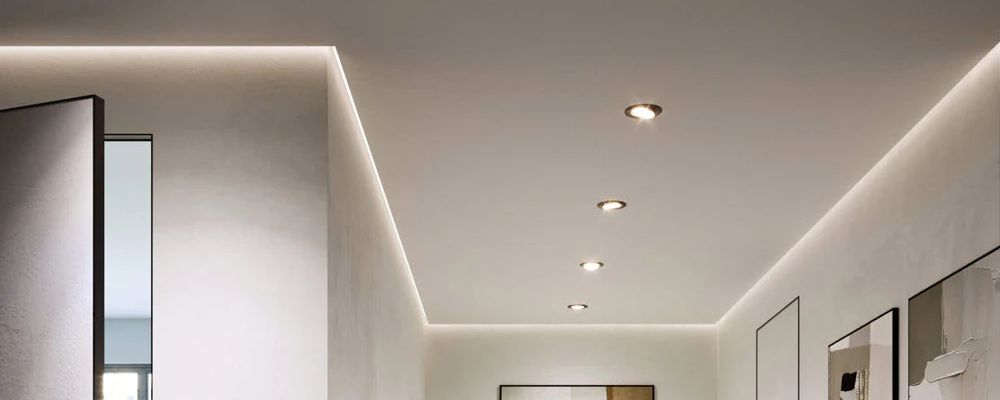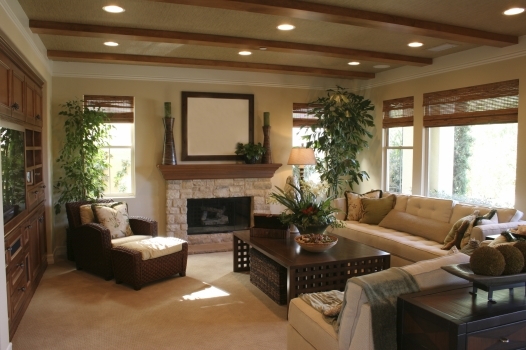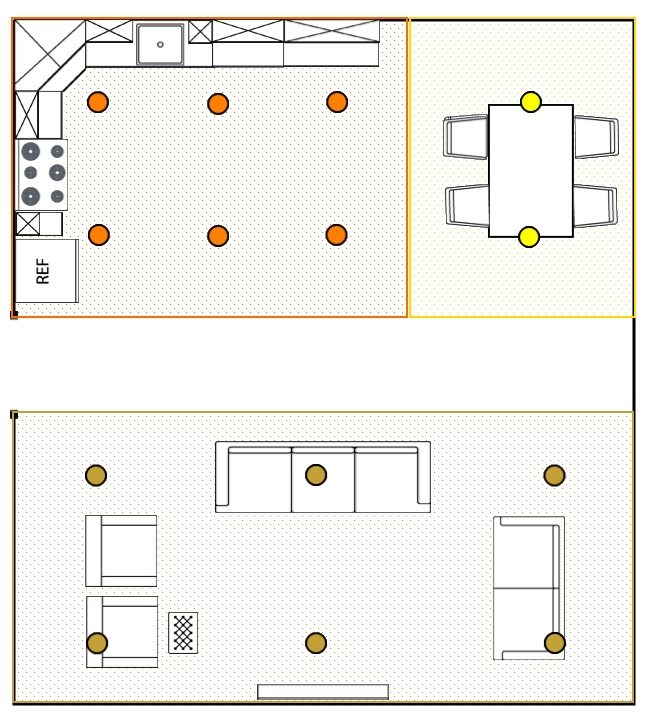To determine how many recessed lights you need, consider room size and lighting goals. The right amount ensures a bright, welcoming space.
Recessed lighting offers a sleek and modern look. But getting the right number can be tricky. Too few lights make a room dim. Too many can feel like a spotlight. Balance is key. You need to think about the room’s purpose.
A kitchen needs more light than a bedroom. Ceiling height also matters. Higher ceilings require more or stronger lights. Placement is crucial. Proper spacing avoids shadows and bright spots. Achieving even lighting enhances a room’s aesthetics. This guide will help you decide the perfect number of recessed lights for any space. Understanding these factors will lead to a well-lit and comfortable home.

Credit: diy.stackexchange.com
Assessing Room Size
Start by measuring the length and width of the room. Use a tape measure for accuracy. Write down each measurement. Multiply the length by the width. This gives you the square footage.
Square footage helps decide how many lights are needed. Larger rooms need more lights. Small rooms need fewer lights. Measure carefully to plan lighting well. Proper lighting makes rooms bright and cozy.

Credit: citylightssf.com
Determining Light Purpose
Task lighting helps you see better when doing things. Bright lights make reading and cooking easier. Recessed lights should be above work areas. This helps you focus and work safely. Kitchens need more lights. Bathrooms too. Rooms with many tasks need more recessed lights. Choose lights that help you see clearly.
Ambient lighting makes rooms feel nice. Soft lights spread evenly across the room. They help you relax and enjoy the space. Recessed lights in living rooms add comfort. Bedrooms need them too. Ambient lighting sets the mood. Not too bright. Not too dim. Choose the right number. Enough to fill the room.
Choosing Light Type
LED lights are energy efficient. They last a long time. They save money on bills. LED lights come in many colors. You can choose warm or cool tones. Cool tones are bright and clear. Warm tones feel cozy. LED lights are safe. They do not get too hot.
Incandescent lights are traditional. They give a soft glow. They are less efficient than LED. They have a short lifespan. Incandescent bulbs are cheaper upfront. They cost more over time. They use more electricity. They get hot quickly. This can be a safety concern.
Spacing Considerations
Determining the number of recessed lights involves considering room size and intended lighting purpose. Proper spacing ensures balanced illumination and prevents overcrowding. Typically, lights are spaced four to six feet apart for optimal coverage.
Avoiding Shadows
Place lights in a way to avoid shadows. Shadows make spaces feel uneven. Use lights in corners and along walls. This helps reduce shadows. It also makes rooms feel bigger and brighter. Keeping lights at equal distances works best. This helps in making the light spread evenly.
Even Light Distribution
Use the same number of lights in every part of the room. This helps in having an even light spread. Spaces with even light feel cozy. Rooms with uneven light can feel dull. Adjust the light’s angle for better coverage. This helps cover all areas without gaps.
Calculating Number Of Lights
Brightness is measured in lumens. The higher the lumens, the brighter the light. A room’s purpose decides lumen needs. For example, a kitchen needs more light than a bedroom. You might need about 3,000 to 4,000 lumens for a kitchen. But a bedroom might only need 1,000 to 2,000 lumens.
To find how many lights you need, use this simple formula. First, calculate your room’s total lumens need. Then, divide by the lumens per light fixture. This gives the number of light fixtures needed. If each fixture gives 800 lumens, and you need 2400 lumens, you’ll need 3 lights.
Professional Installation Tips
Hiring electricians can make installation safe and easy. They know how to handle wires. Electricians have the right tools. They follow safety rules. This prevents accidents. Hiring professionals saves time. It also avoids costly mistakes.
DIY safety precautions are very important. Always turn off power before working. Use a ladder safely. Wear gloves and goggles. Keep tools organized. Follow instructions carefully. Check all wires. Make sure everything is secure. Safety is crucial.
Energy Efficiency Factors
Recessed lights can help save energy. They use less power than old bulbs. This means lower electricity bills. Good for your wallet. LED recessed lights last longer. You buy fewer bulbs over time. This cuts down costs. It’s a smart choice for homes.
Switching to recessed lights saves money. They use less energy. This means paying less on bills. Long-lasting bulbs need less replacing. Less spending on new lights. Savings add up quickly. Your money stays with you.
Recessed lights are good for the planet. They use less energy. This lowers the demand on power plants. Less pollution in the air. Better for nature. LED bulbs have a long life. Less waste in landfills. More sustainable choice for homes.
Design Aesthetic Choices
Trim styles can change the look of your room. Choose flat trims for a modern feel. Rounded trims give a softer look. Some trims are reflective. They make rooms seem bigger and brighter. Others are matte. They create a calm and quiet space. Match trims with other room features. This keeps the style consistent.
Color temperature affects how a room feels. Warm lights create a cozy mood. Cool lights make a space feel open and fresh. Daylight bulbs are close to natural light. They are good for work areas. Choose wisely for each room’s purpose. This ensures comfort and functionality.

Credit: blog.recessedlighting.com
Frequently Asked Questions
How Many Recessed Lights Do I Need For A 12×12 Room?
For a 12×12 room, typically, 4 to 6 recessed lights provide adequate illumination. Space them evenly for best coverage. Consider the room’s purpose and natural light when deciding. Use dimmable LED bulbs for flexibility. Consult with a lighting expert for personalized advice.
How Do You Calculate How Many Recessed Lights You Need?
Calculate recessed lights by dividing room square footage by total wattage per bulb. Aim for 1 bulb per 4-6 square feet. Consider room function and ceiling height for optimal lighting. Adjust based on bulb type and brightness preferences. Ensure balanced light distribution for desired ambiance and efficiency.
Is It Better To Have 4 Or 6 Recessed Lights In Bedroom?
Four recessed lights suit small bedrooms, ensuring adequate brightness. Larger rooms benefit from six lights for optimal illumination. Consider room size, light placement, and personal preference for ambiance. Proper spacing prevents shadows and enhances aesthetics. Consult an electrician for tailored advice.
How Many Lights Are Needed For A 10×10 Room?
A 10×10 room typically needs 1 to 2 ceiling lights or fixtures. Consider lumens and room usage for optimal brightness. Ensure even light distribution for comfort and functionality.
Conclusion
Choosing the right number of recessed lights can transform a space. Proper lighting enhances comfort and functionality. Consider room size and purpose when planning. Balance is key; avoid overcrowding or under-lighting. Use lighting calculators for accurate estimates. Consult professionals for tailored advice.
Always think about energy efficiency and bulb type. Test different arrangements to find what suits your needs. Don’t rush the decision; take your time to get it right. With thoughtful planning, you achieve a well-lit, inviting environment. Your space deserves the best lighting for everyday enjoyment.

